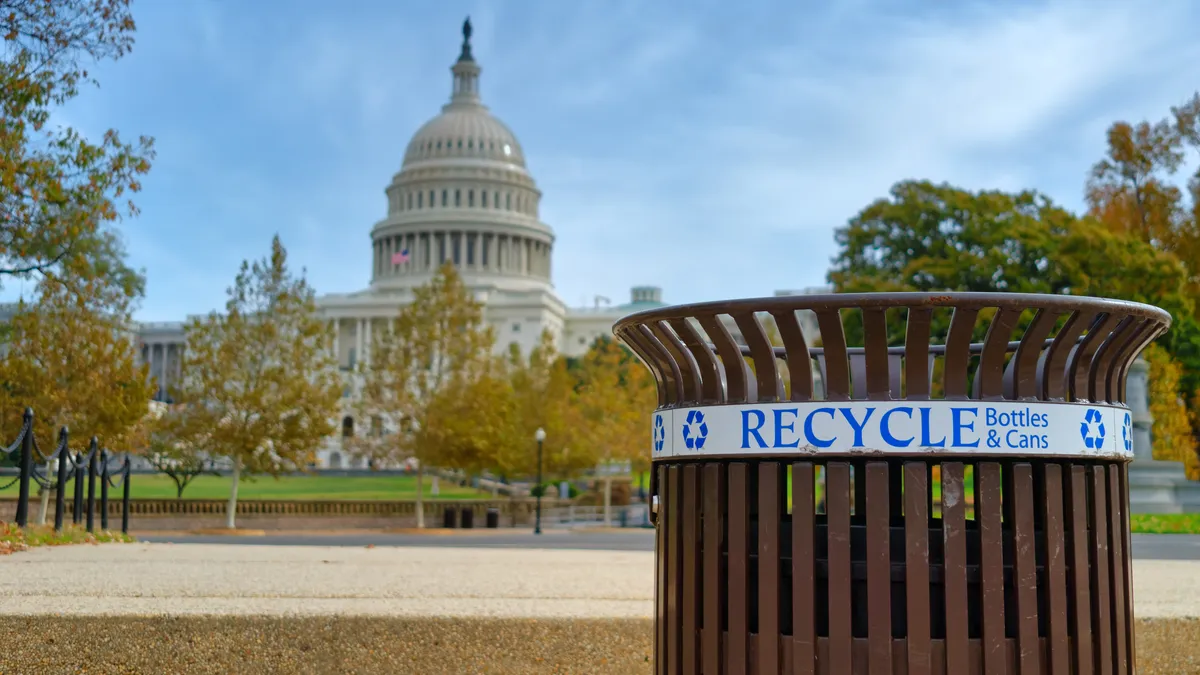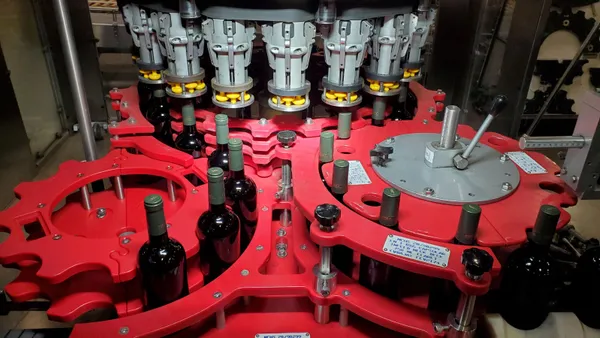WestRock has released its annual sustainability report for fiscal year 2022, touting progress on emissions reduction and responsible forest product sourcing.
“Like the customers with whom we work, we’ve encountered our share of successes and obstacles,” CEO David Sewell said of 2022 in the report. He added that the company “aligned around a range of sustainability commitments and targets” in FY 2021, and in the FY 2022 that ended Sept. 30, “we’ve been doing the work.”
In 2022, the company established the WestRock Sustainability Council to oversee the ongoing development and implementation of its sustainability strategy across business segments. It also updated its sustainability targets and had its greenhouse gas emissions reduction target — to reduce Scope 1, Scope 2 and Scope 3 GHG emissions 27.5% by 2030 compared with 2019 — validated by the Science Based Targets Initiative.
Priority areas to improve sustainability include energy, water, waste recycling, GHG emissions, diversity and inclusion, fiber sourcing and certifications and innovation. Key innovation priorities for the rest of FY 2023 include progress on replacing plastics with fiber products and greater use of digitalization and automation solutions to increase efficiencies.
Emissions
Greenhouse gas emissions data is a “foundational element” of WestRock’s climate management program, according to the report. The multifaceted strategy to meet the GHG science-based targets includes improving energy efficiency at facilities, evaluating fuel mix and incorporating more renewable energy.
Overall, all categories of emissions decreased in 2022, WestRock reported. Scope 1 and Scope 2 emissions dropped 5.6% compared with 2019 levels, on the way to the goal of 27.5% by 2030. That follows an uptick in 2021. The company is partnering with environmental disclosure nonprofit CDP to collect data for Scope 3 emissions inventory.
Total GHG emissions (metric tons CO2e in millions)
| Year | FY19 | FY20 | FY21 | FY22 |
| Scope 1 & 2 Market-Based Emissions | 9.37 | 9.20 | 9.22 | 8.84 |
Taken separately, Scope 2 and Scope 3 emissions have each decreased every year since 2019.
The report notes that WestRock closely monitors the nitrogen oxide and sulfur dioxide emissions that occur while making pulp and paper. Nitrogen oxide emissions increased slightly since the last report largely because of production increases, while sulfur dioxide emissions decreased 10% during the same time period.
Since WestRock’s formation in 2015 through the merging of Mead Westvaco and RockTenn, the company has reduced its coal use by 42.6% and reduced total energy use by 5.8%, the report shows. It also notes that the company’s integrated kraft paper mills, which are its most energy-intensive manufacturing facilities, generate more than 60% of their own energy from burning biomass.
Water
The report explains that the papermaking process requires a constant supply of clean water. Used water is recycled several times at the company’s mills, treated and returned to the environment.
Mill water use in FY 2022 was down 2.4% from 2021. Similar to emissions, water use in FY 2020 and 2021 was higher than FY 2019; last year’s use was down 1.1% from 2019 levels.
This fiscal year, WestRock plans to launch a global education campaign highlighting the importance of responsible water use.
Recycling, circularity and innovation
WestRock aims for all of its products to be recyclable, compostable or reusable by 2025. As of 2022, it had reached 97.8%.
The report says WestRock is one of the largest recycled fiber consumers in North America, handling about 7.1 million tons of paper and packaging annually. It also aims to source all virgin fiber from responsibly managed forests, and last year “nearly 100%” fit the bill.
Innovation goes hand-in-hand with circularity and drives some of the company’s sustainability work. The company said innovation drives its sustainability efforts, having created an innovation council in 2021 to support that work.
The report touts advances such as developing fiber-based alternatives to plastic products, such as plastic rings on packs of cans, and reducing the use of polymer coatings on fiber products. It also pointed to a partnership with Domino’s that launched in August aiming to improve pizza box recycling.
Diversity
WestRock increased the percentage of women in its global workforce from 21.4% in FY 2021 to 22.3% in 2022. Racial and/or ethnic diversity of the U.S. workforce rose from 33.4% to 35.1%. New hires who are veterans rose from 6% in FY 2021 to 6.7% in 2022.














